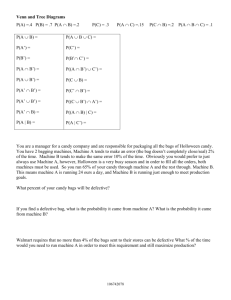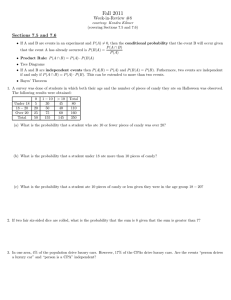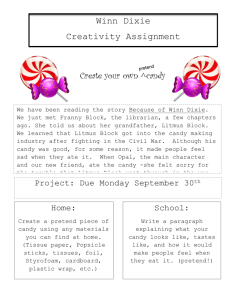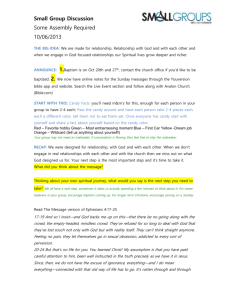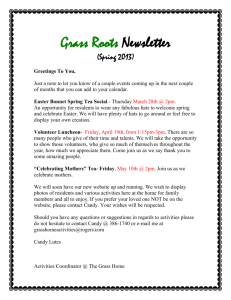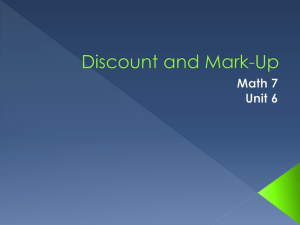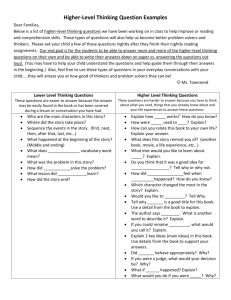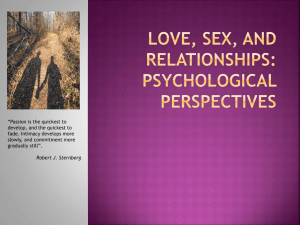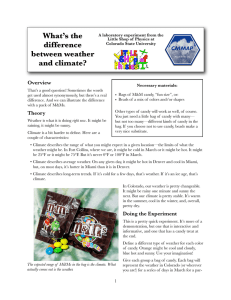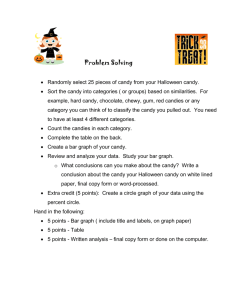Beginning With the End in Mind: Writing Higher Level Assessment
advertisement
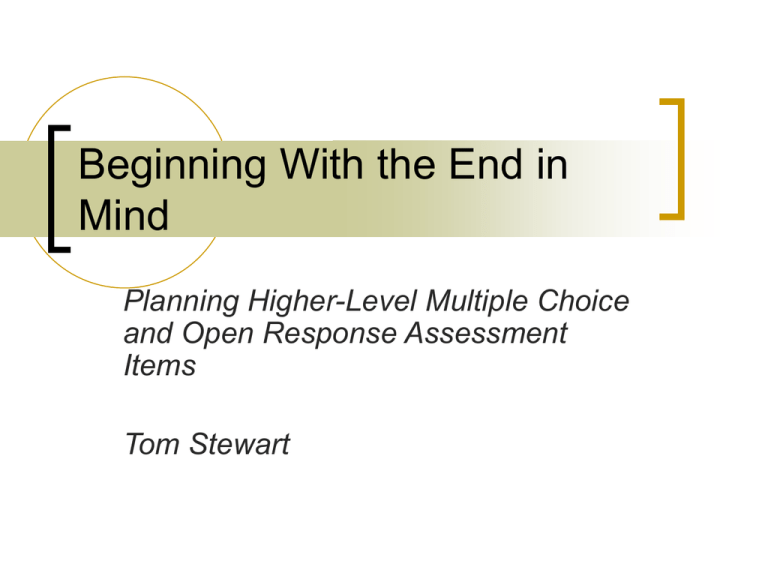
Beginning With the End in Mind Planning Higher-Level Multiple Choice and Open Response Assessment Items Tom Stewart “If you don’t know where you are going, any road will get you there.” Lewis Carroll “If you don’t know where you’re going, then you’ll end up somewhere else.” Anon. Begin With the End in Mind…. Turn to a partner and briefly discuss a time you used this kind of “begin with the end in mind” approach in any part of your life. Explain how it worked for you. Two main criteria for judging quality of multiple choice questions: Content Structure Is the content written to the appropriate DOK level? Does the question address the core content students are expected to master? Question stem Answer choices ACTIVITY Group Activity JIGSAW 5 types of multiple-choice questions. These are the formats for questions that require higher-level thinking. JIGSAW Group Roles: Facilitator Speaker Recorder JIGSAW Instructions Handout. Individual/Pair Activity Using notes, handouts, the resource guide, and the combined curriculum document, practice writing a higher-level multiple choice question using one of the previously discussed formats to facilitate higher-order thinking. This will begin as an independent activity. Then, as you finish, begin to collect and offer constructive, collaborative feedback to your colleagues. Break Beginning with the end in mind … continued…. Strategy Break – Etch-A-Sketch Not this… …but this… One of many Thoughtful Education strategies constructed and compiled by Silver, Strong, and Perini and based upon Marzano’s research. Specifically, a tool for building students’ note-making skills. …from this: Overview – The 5 Types of Open Response Questions Please draw pictures or icons of the main points of my lecture as I tell you about the 5 types of open response questions. I will guide you. As I move to the next type of question, please move to the next box on the page to sketch your picture. Type 1: Single Dimension Asks or gives a straightforward question or task which requires explanation. Example: Rivers provide several advantages to cities. Many Kentucky cities are located near large rivers. Describe three important advantages that the rivers provide these cities. Explain why each advantage is important. Type 2: Scaffolded Multiple parts Each question labeled separately Each subsequent part relies on the student getting the first part correct. Example: In the story you have just read, Trevor is a complex character. A. What traits would you use to describe him? B. How do these traits affect the people around him? Type 3: Response to Provided Information Student responds to passages, data or graphics. Example: A) B) The students in Ms. Chung’s class bought candy that came in small bags. Each student reported how many pieces of candy were in his or her bag. Here are the amounts: 16, 19, 18, 19, 20, 17, 21, 18, 19, 18, 16, 15, 14, 18 , 17 Make a graph, table, chart, or organized list that demonstrates the above data. Ms. Chung also bought a small bag of candy. Based on the data above, predict how many pieces of candy might be in her bag. Explain your thinking. Type 4: Student Choice Provides options from which students choose. Example: You must teach your friend to strike a ball in one of the following activities: a. Golf b. Softball c. Tennis d. Baseball Select one activity and describe the proper steps in preparing, striking and ending a swing. Type 5: Two or More Independent Components Question has multiple parts. One part does NOT rely on the previous part being answered correctly. Example: A) B) This picture shows a sealed bottle with some water in it. It is a model of the water cycle. Use what you see in the bottle and explain the water cycle. Predict how life on earth would be different if water did not go through the water cycle. Next steps… Meet with a partner and examine each others’ pictures. With your partner, collaboratively record big ideas and important details for each of the five types. Reflection and discussion: What worked? Where did I struggle? How might I adapt this strategy for use in my classroom? An open response question is… a way to assess student progress. a question with a right answer, but with more than one way to arrive at the answer. an application of knowledge to real-world situation. an example of writing to demonstrate learning. An open response question is not… a grammar and/or spelling test. a task based only on “recall” skills. a question with only one way to arrive at the answer. an assessment of a student’s writing style. Final Thoughts… Assessment items are not afterthoughts. Be intentional when planning for content, structure, and depth of knowledge. Allow students to experience all appropriate types of assessment items. Summative Formative
